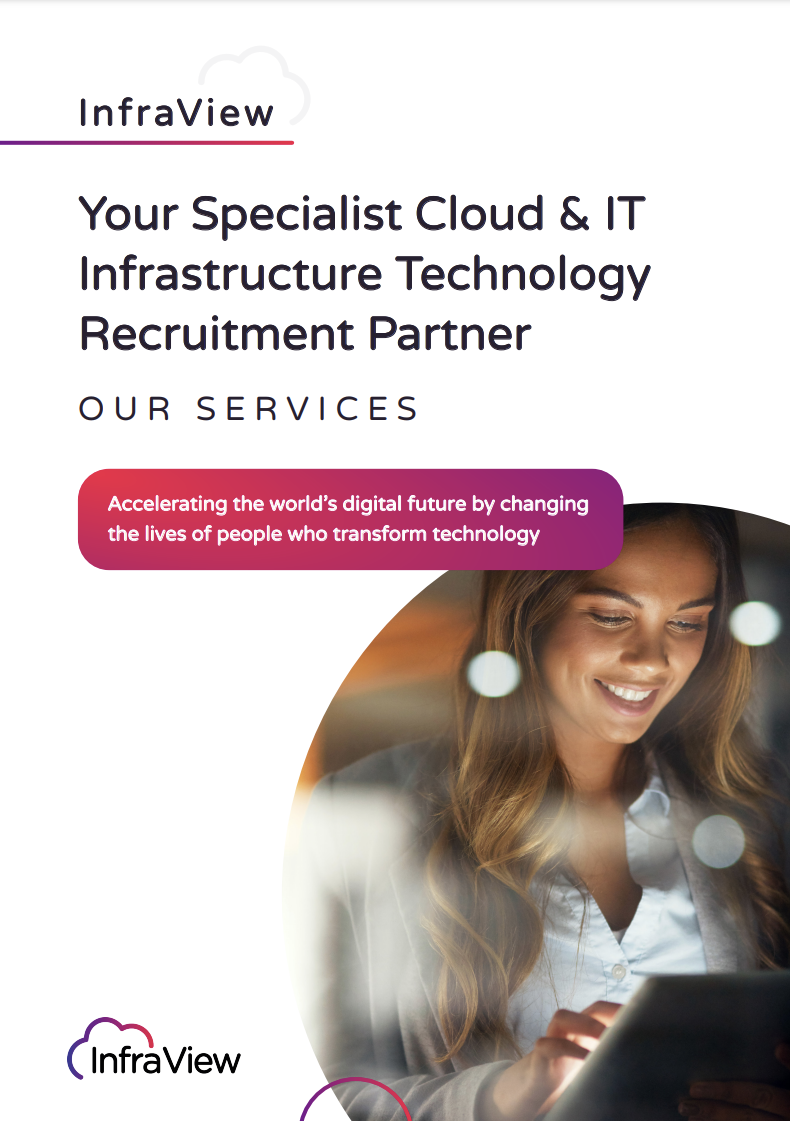Reduce your Time-To-Hire to Attract Top Cloud Candidates
- Why is time-to-hire important in Cloud & IT Infrastructure recruitment?
- Why you should monitor time-to-hire
- Plan your Cloud & IT Infrastructure recruitment before roles need to be filled
Tick. Tock. Tick. Tock.
Time flies when you’ve got too much to do.
As a cloud & IT infrastructure professional, you spend your time supporting, designing, engineering and implementing projects for your clients.
In order to do this effectively, you need the best teams on the market.
To ensure you can hire the right people at the right time, you need your cloud recruitment process to be as slick and efficient as possible.
Spending too much time in the recruitment process can lead engagement with top candidates to stagnate, meaning you miss out on the best cloud & IT infrastructure talent on the market.
That’s why time-to-hire is so crucial.
Here at InfraView we know all about not only how IT solutions providers work, but also what candidates are looking for in today’s cloud jobs market.
If you’re in need of quick, personalised advice you can give us a call on 020 3617 1040 and one of our team can give their insight.
But for now, let’s learn more about what you need to know about time-to-hire.
Why is time-to-hire important in Cloud & IT Infrastructure recruitment?
Reducing time-to-hire is crucial in attracting and retaining the best cloud candidates on the market.
But what exactly is it? And what makes it so important to IT solutions providers?
Our Co-Founder Tim Davey has the answers you need:
“Time-to-hire is the time it takes from receiving a CV to a candidate starting in your business.
Time-to-hire is critically important in the recruitment process.
If you think about the sayings “time kills deals” and “time is money”… the less time you can spend in the interview process, the more time you have to do other responsibilities within your business. On top of this, the quicker the recruitment process, the higher the probability is of securing a top Cloud candidate.
Think about it. You’re a candidate. Company A has offered quick feedback, quick turnaround on interviews and a really slick interview process. You understand fully where you at during the entire recruitment period. You receive your offer letter and things have happened within a week to ten days. Company B has not offered quick feedback or speedy turnaround times. It feels like your CV is in a black hole. You don’t know what’s going on. You don’t know how your interview went. You wait ten days until you receive an interview. You then wait a further ten days until you get a second interview. By that time, you’ve received three or four cloud jobs offers from elsewhere. Which do you choose? It’s a no-brainer!
So how can you reduce your time-to-hire?
1. Work across the business
Make sure everyone is bought into your cloud recruitment process. Ensure you have a strong management team within a company structure that is bought into growth and recruiting the top cloud talent, reducing time-to-hire.
2. Have a strong cloud & IT infrastructure recruitment process
Make sure you know who is responsibility for what and when. Build cloud recruitment and interview time into decision makers’ and hiring managers’ diaries. Don’t put recruitment second!
3. Work with a specialist cloud & IT infrastructure recruitment agency
If you partner with a cloud recruitment agency that understands your market, the motivations of your candidates and cloud & IT infrastructure technologies, fully understands your requirements and doesn’t waste your time with ill-fitting cloud candidates and adds value to your process, then you will have a lot more time to focus on other aspects of your job. Candidates will feel that they are being managed properly. The whole cloud recruitment process will be slick and reduce your time-to-hire.”
Why you should monitor your time-to-hire
So we know that time-to-hire will reduce your time in the interview process, create a better cloud candidate experience and ultimately increase return-on-investment.
Like all aspects of the recruitment process, monitoring its effectiveness will give you a head start in improving the results of your hiring efforts.
Our Co-Founder Tim Cazemage has some great insights into how and why you should monitor your time-to-hire:
“I’m sure all IT solution providers out there have headcount approval and budgets in place based on company growth and project pipeline.
But I believe it is imperative to monitor the total time it takes for a potential cloud & IT infrastructure candidate to apply until the second they accept that offer.
Are you monitoring the amount of time that a position within a company remains unfilled?
How could this affect your business?
By having positions empty within your teams, your current employers will feel an additional strain on their workload as new projects come in, which in turn can lead to a decrease in staff satisfaction and retention rates.
Monitoring your time-to-hire is so important in minimising disruptions in your workflow and pipelines.
It will show you areas of your cloud & IT infrastructure recruitment process which need improving, but equally where you are already doing well. This means you can make changes to mitigate against flaws in your system, and pull out even greater wins from your hiring process.
Calculating your time-to-hire is simple. Simply subtract the day the candidate entered the pipeline from the day they accepted your offer.
If you do this for each role, you can begin to see patterns across the whole business and individual teams and divisions. This means even more data on where you can improve your cloud & IT infrastructure recruitment process.
Top IT solution providers and managed services providers should have a recruitment monitoring process in place already. Whether you are using a simple spreadsheet, or running this data through an internal recruitment system, there are always areas of improvement which can be shown using metrics such as time-to-hire.
As a top specialist cloud & IT infrastructure recruitment consultancy, InfraView are constantly monitoring and tracking how long it takes to attract and secure top talent in the market. Certainly those candidates with in demand cloud & IT infrastructure technical skills.
So are you tracking your time-to-hire effectively, and if so is it showing you areas of possible improvement in your cloud & IT infrastructure recruitment process?”
Plan your cloud & IT infrastructure recruitment before roles need to be filled
You’re monitoring your time-to-hire. You see areas of improvement, but can’t seem to get the number down.
Will Martin has some ideas on how proactive recruitment planning could help:
“It’s vital that you have your cloud & IT infrastructure recruitment plans laid out.
It’s also critical that everyone is committed to your recruitment process once you action it. A slick hiring process can mean that the impact on the business is limited. Planning ensures the right people are in the right place at the right time, freeing up time to perform other aspects of your job. At the same time, a process that isn’t slick can result in losing top cloud & IT infrastructure candidates.
The amount of time it takes to hire someone, or time-to-hire, has reduced somewhat with the remote nature of the process. But from pinpointing that you need a specific new hire to planning your recruitment process, writing your cloud jobs ads, and completing the process can still take upwards of two to three months. That kind of timescale will of course have a negative impact on your business. Needing but lacking that additional resource and set of cloud & IT infrastructure skills will put additional pressure on your team leading them to feel overworked. This will lead to lower job satisfaction and increased stress. This then means project work becomes backed up, your clients become unhappy with the service that they are receiving from your organisation, losing you revenue as a result of cancelled orders and the inability to deliver. To counter this, senior technical managers need to drop down to support the team, which takes them away from being able to perform their normal duties in their own job role, producing revenue and work for your business.
A lack of distinct plans can lead to an elongated process, especially if you’re firefighting due to the volume of project work that has backed up as a result of a lack of skilled personnel. It will also make it a worse experience for the candidates.
However it’s not all doom and gloom!
Having those set cloud & IT infrastructure recruitment plans and hiring strategy in place will enable you to implement them quickly and effectively. All individuals within the recruitment process will be able to mobilize quickly, get things moving, reduce your time-to-hire and reduce the disruption within your business.
By having plans you can create a roadmap of areas for future hires that could be a problem for your business which you catch before they arise, meaning even less disruption and further reduced time-to-hire.
It also allows your hiring managers and technical managers to know precisely which persona of cloud & IT infrastructure candidates they are looking for and when, meaning they can concentrate on moving the business forward to make it more profitable and minimise disruptions as a result of a shortage of head count.”
Conclusion
Time-to-hire is crucial for any IT solutions provider who wants to build the best teams on the market.
It will help your business to avoid disruptions through a drop in head count, and keep your company moving forward.
Monitoring your time-to-hire will show you areas of improvement, so you can continue to update your cloud & IT infrastructure recruitment process.
It will also show top cloud candidates why they should work for your business.
Need help today?
Give us a call on 020 3617 1040 or drop us an email at hello@infraview.co.uk.










